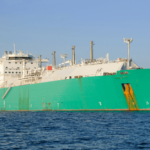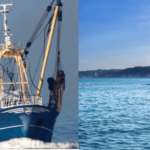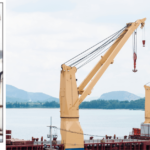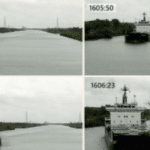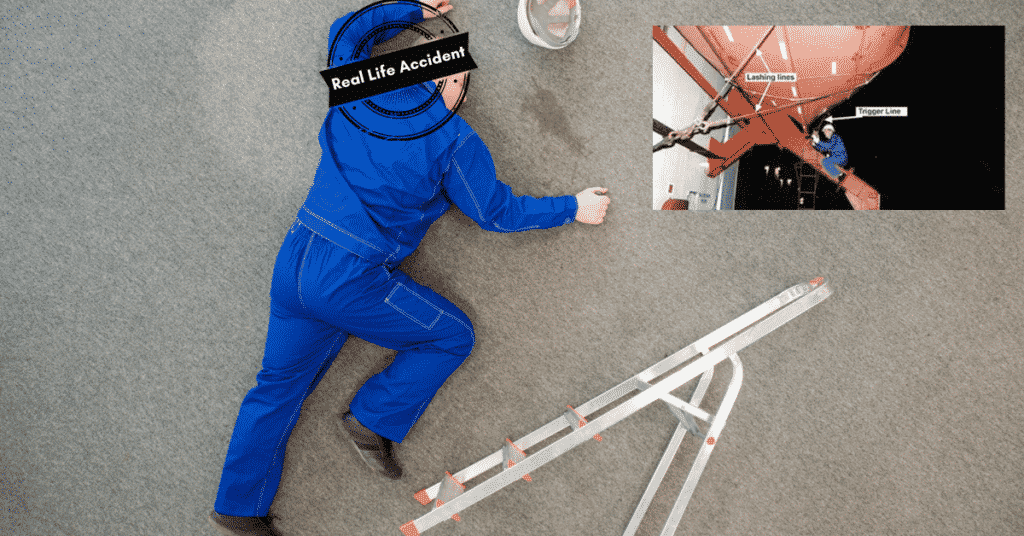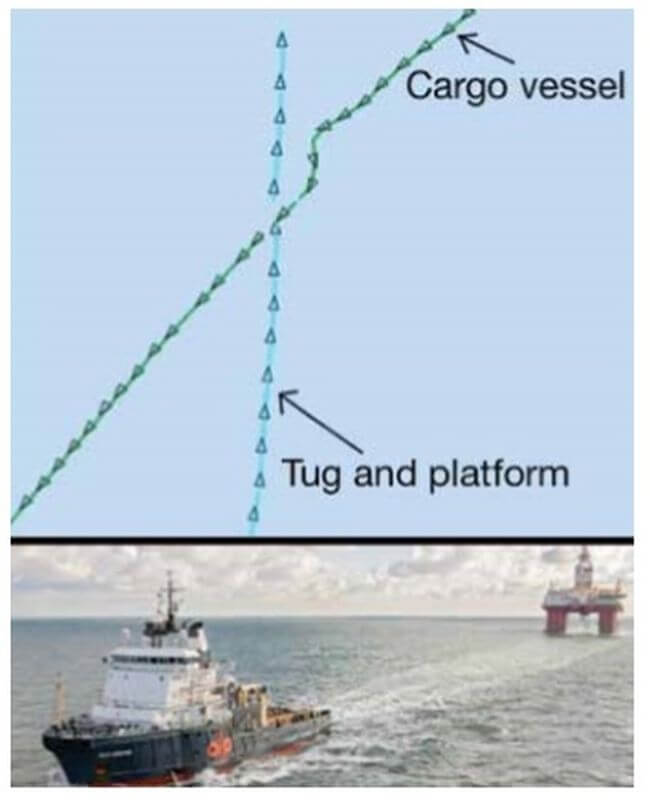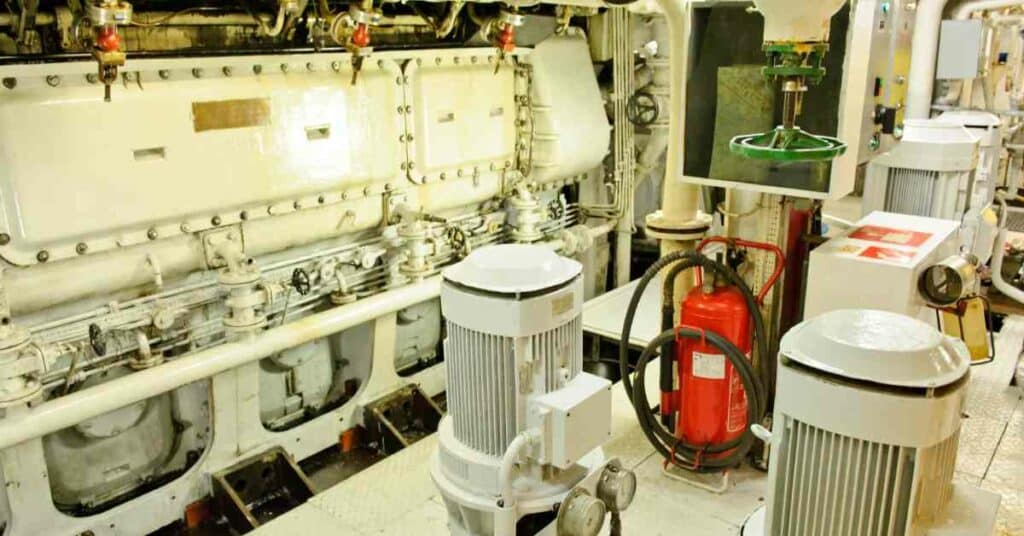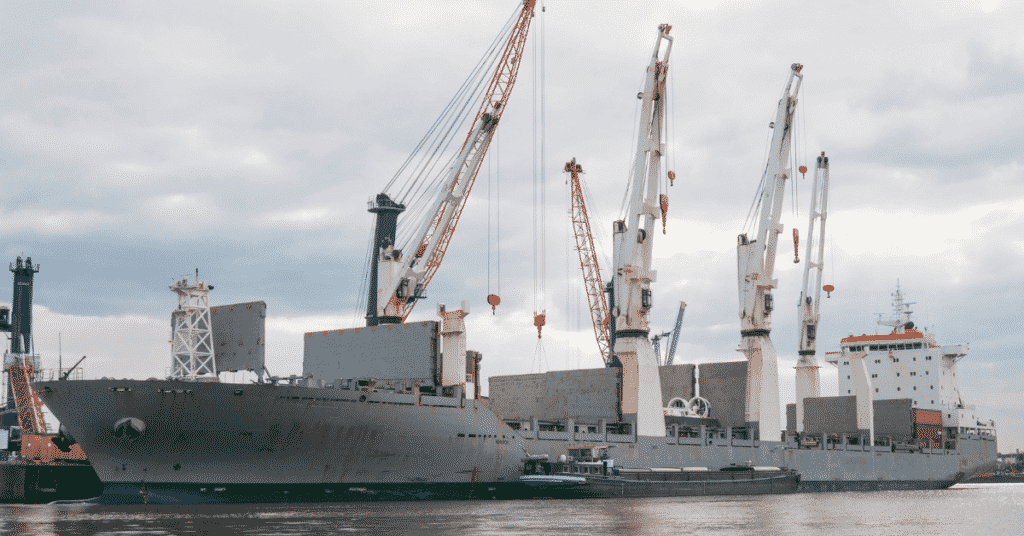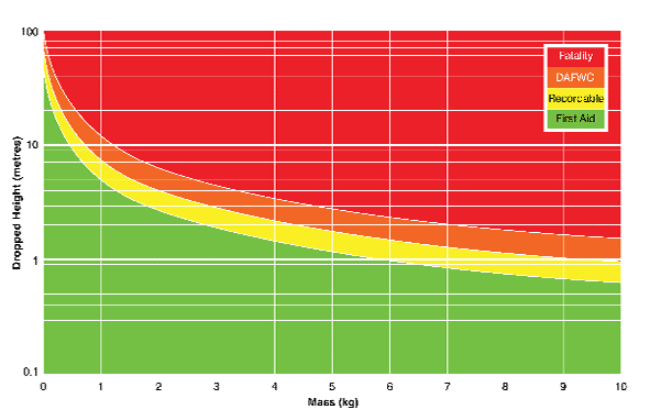Real Life Incident: Collision With Tug
A ro-ro vessel was inbound and had just boarded a pilot. The Master was soon to take a pilot exemption certificate for the port, so he asked the pilot for permission to manoeuvre the vessel into the harbour under the pilot’s supervision. The pilot had no objections.
Infrastructure works were taking place in the harbour near the ro-ro vessel’s dock. On the day of the occurrence, a dredging barge, split hopper barge and an attending tug were working as a group in an area indicated by four yellow buoys.
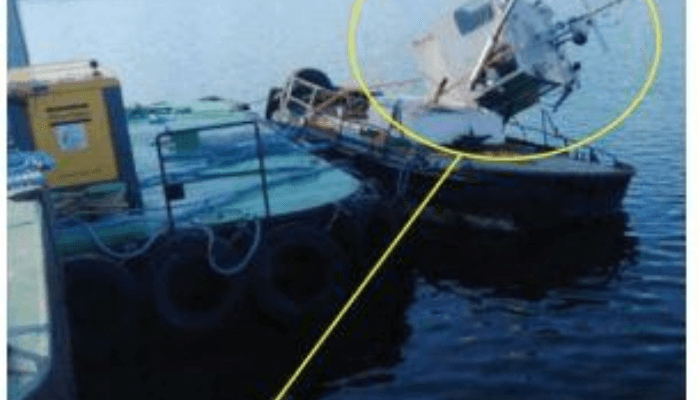
As the ro-ro vessel entered the harbour, it had to turn through 180 degrees before berthing. An officer, in direct radio contact with the bridge, was posted on the quarterdeck in order to assess and report the distance between the vessel’s stern and the dredging units. Once the vessel’s stern had passed the last yellow buoy of the dredging area at a distance of 30 metres, the Master initiated the turn to port, using the rudder and side thrusters (bow and stern). The Master then moved to the portside bridge wing where the engine, rudder and side thruster controls were now switched. At about the same time, the pilot moved over to the starboard side of the bridge in order to have a better view of the vessel’s stern.
The vessel gained speed astern, and was closing on the dredging units. The officer on the quarter-deck warned the bridge team that the vessel was now 20 metres from the dredging units and continued to give the distances, which were closing quickly as the ro-ro was now making about two knots astern. At some point, full ahead was applied on the engine controls but the effect was too late. The stern of the ro-ro continued to sweep over the attending dredging tug. The tug wheelhouse was torn from its attachments, and was left hanging over the starboard side of the tug.
After the collision the ro-ro proceeded ahead in order to pass the dredging unit, complete the turn and reverse into its berth. The three crew of the dredging unit were unharmed but the tug was listing heavily.
Lessons learned
Controlling a vessel that is moving in two directions (swinging and fore/aft movement) is harder than controlling a vessel that is moving in only one. The fact that the vessel was turning at the same time as it was reversing probably affected the bridge team’s situational awareness.
Reference: The Nautical Institute
Disclaimer :
The information contained in this website is for general information purposes only. While we endeavour to keep the information up to date and correct, we make no representations or warranties of any kind, express or implied, about the completeness, accuracy, reliability, suitability or availability with respect to the website or the information, products, services, or related graphics contained on the website for any purpose. Any reliance you place on such information is therefore strictly at your own risk.
In no event will we be liable for any loss or damage including without limitation, indirect or consequential loss or damage, or any loss or damage whatsoever arising from loss of data or profits arising out of, or in connection with, the use of this website.
Do you have info to share with us ? Suggest a correction
Disclaimer :
The information contained in this website is for general information purposes only. While we endeavour to keep the information up to date and correct, we make no representations or warranties of any kind, express or implied, about the completeness, accuracy, reliability, suitability or availability with respect to the website or the information, products, services, or related graphics contained on the website for any purpose. Any reliance you place on such information is therefore strictly at your own risk.
In no event will we be liable for any loss or damage including without limitation, indirect or consequential loss or damage, or any loss or damage whatsoever arising from loss of data or profits arising out of, or in connection with, the use of this website.
About Author
Marine Insight News Network is a premier source for up-to-date, comprehensive, and insightful coverage of the maritime industry. Dedicated to offering the latest news, trends, and analyses in shipping, marine technology, regulations, and global maritime affairs, Marine Insight News Network prides itself on delivering accurate, engaging, and relevant information.

About Author
Marine Insight News Network is a premier source for up-to-date, comprehensive, and insightful coverage of the maritime industry. Dedicated to offering the latest news, trends, and analyses in shipping, marine technology, regulations, and global maritime affairs, Marine Insight News Network prides itself on delivering accurate, engaging, and relevant information.
- Real Life Incidents: Near Miss In Open Water And Good Visibility
- Real Life Incident: Poor Situational Awareness Leads to Collision
- Real Life Incident: Monkey’s Fist Knocks on Office Window
- Real Life Incident: Paint Storage Slip-Up On Ship
- Real Life Incident: Checklist Mentality Is A Burning Problem
- Real Life Incident: Vessel Speed Exacerbates Bank Suction
Latest Case studies Articles You Would Like:
Daily Maritime News, Straight To Your Inbox
Sign Up To Get Daily Newsletters
Join over 60k+ people who read our daily newsletters
By subscribing, you agree to our Privacy Policy and may receive occasional deal communications; you can unsubscribe anytime.




